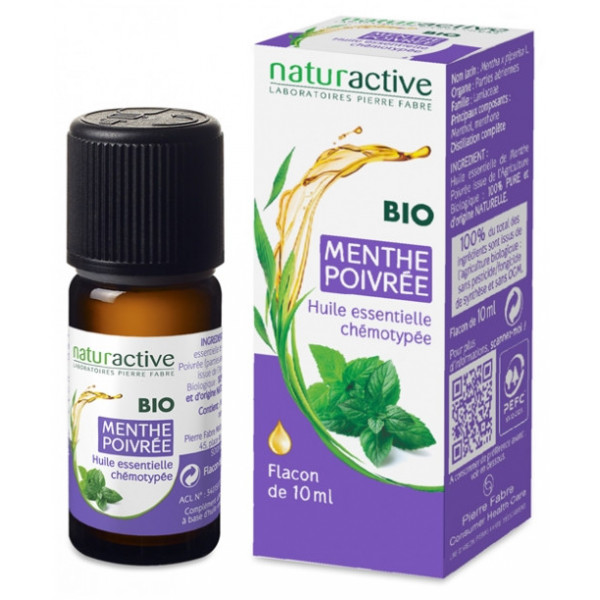Indications of organic peppermint essential oil
Treats benign digestive problems (antispasmodic, carminative, anti-septic essential oil), headaches (soothing essential oil), decrease in tonus (stimulating essential oil) and respiratory infections and/or benign ENT (anti-septic essential oil).
Botany information
Mentha x piperita L Botanical family: Lamiaceae Producing organ: flower head, outside parts Chemotype: mentol, menthone Origin: India
Botany specifications
A perennial plant in temperate countries, the mints are part of a large family. Peppermint is a natural hybrid recognisable for its sections of purple stems, dark green leaves and pungent odour.
Use
Diffusion -, Bath -, Massage +, Orally ++
Ambient setting: on its own or in a mixture by regular low heat evaporation.
Atmospheric diffusion: not recommended
Dermal application: diluting, 5-15% (maximum 30%) in vegetable oil.
Orally: diluted with some vegetable oil - only after medical agreement. 1 drop twice a day.
Inhalation: only when mixed with other essential oils
Practical advice
Important to know : Peppermint is major essential oil within the aromatherapy range.
Digestive problems : It can often be used for: - Nausea (adults): 1 drop of peppermint and lemon essential oil on a sugar cube twice per day. - Intestinal Spasms: 30 drops of peppermint EO + 60 drops of bitter orange EO in a 30ml bottle; finished with vegetable oil: massage onto the abdomen 2-3 times per day.
It is the freshness that calms: The well-known effect of menthol is beneficial for many small daily pathologies. - Headache (adults): mix peppermint and lavender essential oils in equal parts then dilute the mixture with 30% of macadamia vegetable oil: spread it out over the temples, avoiding the eyes. - Shocks: apply the pure peppermint oil onto the painful area.
Contraindication
Contains menthol. Orally: Warning- 50 drops per day = lethal dosage. Massage: never on an area with hypothermia pain. Not recommended for pregnant or breast feeding women or children under 12 years of age.




